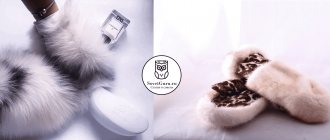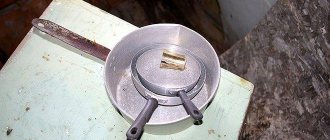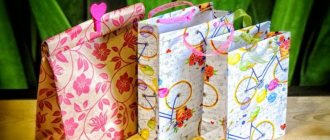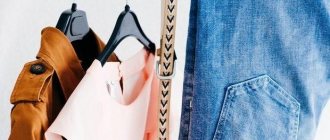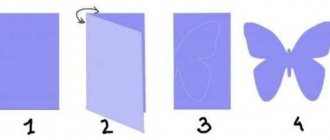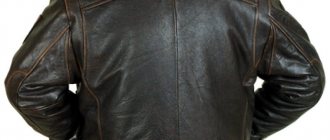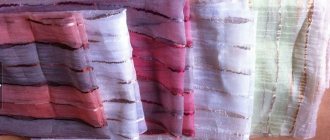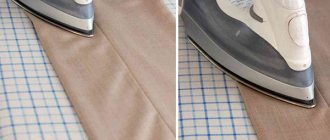The magic of charm » Fashion and style
A fur coat is the main attribute of any women's dressing room. Some have more than one, but for most it is the only and unforgettable copy. When a fur coat loses its presentable appearance, becomes very outdated or worn out in some places, you can correct the situation - remake or alter the old fur coat. Options for new products depend on the degree of wear of the fur coat and its individual elements.
The length of time a fur coat has been used can be noticeable by frayed sleeves, elbow bends, collar and shoulder seams, but if the product is long, then its hem can be significantly damaged.
You can remake an old fur coat and get different things: a fur hat, jacket, vest, boa, shoes (house slippers), mittens, coats, car seat covers. All this can be altered from a worn fur coat by selecting the surviving parts from it.
Fur restoration
Fur restoration is considered one of the most difficult, but at the same time very popular services.
Therefore, in workshops this type of work is the most expensive. When evaluating work, the value of the fur and its location on the product (back, sleeves) are taken into account. During such work, the master will remove worn areas on the fur coat, damage from moths, and clean it of various contaminants.
It will also restore the fullness and color of natural fur. At the request of the client, the master can change the color. Restoration work involves preserving the cut and style of the original product.
The method of cleaning dull and dirty fur is determined by the master depending on the condition of the product and the type of fur. For example, beaver, otter and nutria fur coats need only be ironed for them to acquire a beautiful shine. To update the appearance of astrakhan fur, special oil-based products are used. They process the fur, and it acquires a beautiful shine. To restore color, faded fur is repainted in a natural color.
Even snow-white fur coats can be restored to their original appearance using special modern reagents. On heavily worn areas, the master will insert skins that are ideally matched to the color, structure and length of the fur. If the fur coat is severely damaged and cannot be properly restored, then it will need to be partially or completely recut.
Remaking an old fur coat into a new one
Remaking an old fur coat into a new one
How to sew a stylish and fashionable item from mink and mouton
Remaking a mouton fur coat
Mouton fur coats are warm and inexpensive, and are also distinguished by their practicality and durability. But, unfortunately, the styles of mouton fur coats are most often boring and of the same type in design. How to make a mouton fur coat more original:
- If the fur coat is long, you can shorten it and add leather inserts. If the fur coat is narrow, then leather wedges can be inserted into the sides.
- A pattern of trimmed fur will add originality.
- Add a belt to your look; it will perfectly highlight your waist.
If the fur coat has become too large, you can sew it in and adjust it to fit your figure. But if you go to a studio, such alterations will be considered tailoring and not repairs, which means the price for the work will be too high. In this case, it is better to buy a new fur coat and sew another product from the old one, the choice is yours.
Remaking a mink coat
Don’t rush to sell or give away your old mink coat; it can easily be converted into another product. New fur will not always be of better quality, since there are too many fakes.
- You can completely change the cut of an old fur coat: cut off the length and make it into a skirt or hood with original ties;
- decorate with perforated leather, similar to lace or suede, embroidered with beads or gems;
- you can come up with many other options and get an unusual, exclusive new thing;
- if the fur coat has become a bit short, the solution to the problem is simple: insert a piece of decorated leather or suede into the waist and sleeves;
- you can combine an old mink item with other fur;
- Another option is to make the fur coat even shorter and get a comfortable and practical car coat.
Read more about how to bleach yellowed fur here.
Remaking an astrakhan fur coat
Noble astrakhan fur is very fashionable today. But finished fur coats made from it, as a rule, are of the same type and are not original. In addition, astrakhan fur visually adds age.
You can avoid this and add a vintage feel by using a stylish fur boa, which is used around or instead of a stand-up collar. Another option is to combine astrakhan fur with leather or with soft cashmere stoles or scarves.
How to alter a sheepskin coat
Don't rush to throw away your old sheepskin coat. All defects are removed, sewn up, and removed, just like with fur coats. If the condition of the product is very bad, you can alter it with the fur facing out. It will turn out original and unusual.
What can be made from a mouton fur coat: add original elements
It is not for nothing that Mouton is considered an almost eternal fur; it is perfectly preserved for decades. But nothing spoils the image more than an old-fashioned style and the question, “what can be made from a mouton fur coat?” arises over time before each of its owners.
What is worth considering when deciding what can be made from an old mouton fur coat? Firstly, the properties of the fur itself, it is dense and rather “heavy”; a frivolous fur vest can ultimately turn out to be bulky and not elegant. For such alterations, “light” furs with fluffy pile, such as mink or fox, are best suited.
In addition, a mouton is quite difficult to sew - you will need special equipment and skills of a furrier. Therefore, it is best to contact a studio, but come there with a ready-made idea. For example, the style of a fashionable sheepskin coat.
First, assess the degree of wear of the fur; all damaged areas will need to be removed. And add new and original elements to the style itself. For example, use a wide hem for the hood or sleeves of a new style.
This fur goes well with natural leather and suede, and the new bright fittings will give your short fur coat a stylish look. A trim made from fluffy fur, fox or arctic fox will look no less good.
Ideas on how to remake an old fur coat
Fashionable vest made from an old fur coat
Usually the most worn part of any item is the sleeves. This also applies to fur coats. Why not ditch the worn sleeves and make a warm, stylish vest?
In order to rip out the seams near the sleeve sewing line, you will need a knife. Start by making neat cuts in the thread and work your way along the sewing line. After completing this step, sew the previous joints with new seams. With these actions you will prevent the entire fur coat from falling apart at the seams and add aesthetics to the overall design.
If the volume of the body of the fur coat is greater than the volume of the chest circumference, you can sew in the remaining fabrics and decorate them as part of the overall design. It is good to hide the suturing with the help of old sleeves, or with the help of strips or overlays.
Fur coat with stripes
Stripes can be:
Stripes look harmonious with almost any type of clothing.
You can use both fur stripes and stripes made from various synthetic fabrics
The end result will be able to hide old scuffs and make your appearance charismatic and modern - now it is in fashion to look bright and attract attention
Fur coat using inserts
The inserts can also be used as hidden pockets and hiding places, which can be useful in emergency situations or to save space in your pockets. The insert can have either a chaotic or a geometrically correct shape.
Inserts made of longer fur than the length of the base fur of the fur coat look original.
This design move will attract increased attention to you and make you stand out in photos with friends.
Before sewing on the inserts, it is necessary to stitch their outer part to avoid sections and add greater aesthetics. Sewing is best done with a sewing machine, which will speed up the process and make the seams more neat. Handmade will require more time, but can be used as part of the design.
Preparing a fur coat
First of all, it is necessary to assess the degree of wear of the old fur coat, examine the shiny places and areas of wear. To do this, you need to tear off the lining and make a thorough inspection of both the fur and the inner parts.
Important! Sleeves are most susceptible to abrasion on the elbows. The fur on the shoulder seams is rubbed off from carrying the bag. In addition, the location of the fastener, collar, hem, especially long fur coat models, over time have a not very pleasant shiny appearance.
Therefore, it is necessary to eliminate all damaged areas of fur. To do this, you need to use an ordinary tailor's ripper. Using it, we steam all damaged areas and throw them away, after which we steam the shoulder and side seams of the assembly of the old fur coat.
Models of altered mink coats in the photo (before and after)
Don’t rush to sell or give away your old mink coat, which can easily be upgraded to a fashionable one. New fur will not always be of the best quality; there are too many fakes now.
- You can completely change the cut of an old fur coat: cut off the length and make it into a skirt or hood with original ties;
- decorate with perforated leather, similar to lace or suede, embroidered with beads or gems;
- you can come up with many other options and get an unusual, exclusive new thing;
- if the fur coat has become a bit short, the solution to the problem is simple: insert a piece of decorated leather or suede into the waist and sleeves;
- you can combine an old mink item with other fur;
- Another option is to make the fur coat even shorter and get a comfortable and practical car coat.
Important! A white mink coat often turns yellow quickly and it is not always possible to bleach it. In this case, the product can be painted
For example, a white mink that has turned yellow with time will look great with a gray-brown leopard. The main thing is not to be afraid of experiments, and a worn item will turn into a bold designer item.
Read more about how to bleach a yellowed fur coat here. You can also learn how to dye fur at home.
What can be made from an old tsigeik fur coat: slippers and ugg boots
Mouton or tsigeika (this is its historical name) is very difficult to use for decorating bags or shoes, this is also worth taking into account. And if you don’t want to wear even an updated item, it makes sense to use this fur in the household.
What can be made from an old chicken fur coat? This fur makes beautiful blankets and even carpets. The technology for their creation, despite its apparent complexity, is quite simple, but it will require time and ordinary handicraft skills.
To begin with, the product should be completely ripped apart, retaining only the side seams, removing all damaged areas, and then, like a puzzle, assembling a new fabric, simply selecting the missing parts according to the shape.
The fur is sewn from the inside out, the shape of the blanket itself will turn out to be “irregular” or fancy, it can be preserved by finishing the edges with bias tape, or you can trim it, making the blanket rectangular and also finishing the edges with bias tape.
From well-made, soft and flexible tsigeya you can sew home slippers or real ugg boots.
How to alter a fur coat?
Consistent completion of all stages of converting an old fur coat into a new one will be the key to a successful result.
Rip the fur coat into separate pieces. Check the condition of the fur. Areas of the skin that cause suspicion should be moistened with warm water up to +35°C. After 30 minutes, the skin should be slightly stretched. If it breaks, the product will not last long. This is evidenced by the crumbling fur fibers. Cutting should be done with a special fur knife or blade
They must be used carefully - lightly touching the surface of the skin. Scissors are not used for cutting, because
they can damage the pile. Using patterns and templates, cut out the details of the new product. Patterns are made according to individual sizes. When cutting, the material should be laid with the flesh side up and the fur side down. Sewing a new fur coat, jacket or other fur product is done by hand. To connect the parts, a “goat” seam is used, as well as a bidirectional “over the edge” seam. The thread (No. 40-45 cotton) should not be too tight, but it should not be loosened either. Where the load on the seam will be significant, it should be strengthened by placing doublerin or adhesive pads, they are sold in sewing stores. The finished seam should be leveled: a damp cloth is placed on the seam and the whole thing is pressed down with a weight until it dries completely. At the end of the work, the fur should be combed in the seam area against the pile and along the pile.
If the area of the skin at the seam site seems weak, then it should be strengthened with a plaster and stitched together with it.
Fur coat before and after alteration
Schemes and patterns will help you get the desired product, and photos will show how a new fur coat is transformed after alteration.
We sew a fur vest
Most often, an old fur coat is turned into a fur vest. After all, usually when worn, the sleeves of the product become greasy and wiped. And since the vest simply doesn’t have them, the altered item will look like it came from a store. In addition, the vest is universal - it can be worn with jeans or with a beautiful dress. This is a very comfortable outerwear for women who travel by car most of the time.
Put on your fur coat and stand in front of the mirror to determine the length of the vest. Then carefully, from the inside out, mark the cutting line using chalk or a piece of soap. Remember to leave about 2cm at the seam. Place the item on a hard surface (table) and carefully cut with sharp scissors. Hem the cut area using a machine. If you don’t have one, you can hem it yourself. It is better to do this with oblique stitches, not forgetting to tuck the fur inside with a needle. When sewing, do not forget to capture about 0.3 cm of the inside. First sew the product in one direction, and then go back. Don't pull the stitches too tight.
We rip off the sleeves of the fur coat with a blade, starting from the inside out. That is, first you need to rip the lining and only then the seams on the fur itself. This way you won't cut the product. The resulting armholes must be hemmed using the same method as the bottom. If you want, you can make a deeper neckline on the chest. Just don’t forget to first make outlines with chalk from the inside and only then start cutting.
How to change the style of a fur coat?
First you need to split it into separate elements. Using needles, pin each piece to the table and smooth it out. After this, repair the fur: sew up all the holes, remove areas with damaged fur. Cut out new parts using patterns and sew a new style of fur coat.
Photo of a fur coat: how to alter it
Fur vest from an old fur coat
This is the simplest and most popular way to remake an out-of-fashion and rather boring fur coat. Fantasy is not limited here. You can use the fur of one product or combine several types of different furs if there are other fur items in the house that require alteration.
Read more about this in the master class on how to sew a fur vest with your own hands.
Bolero jacket
This option is good because it requires very little material, even a child’s fur coat is enough. The bolero jacket is made from smooth fur or short-pile fur.
Mixed fur coat with leather inserts
To change an old fur coat into a fashionable one, you will need to rip it open and check the condition of the inside, sew up the holes, and remove pieces with frayed fur.
There are two options for sewing a mixed fur coat:
1. Prepare leather bands. Dissolve the fur into strips horizontally. Sew strips of fur and leather alternately.
2. Leather strips are used as separate inserts: on the waist, sleeves, pockets and shelves.
What can be made from an old nutria fur coat: coats, capes and stoles
When deciding what can be made from a nutria fur coat, first of all, it is worth assessing the capabilities of the fur itself. Very durable and warm, it even has water-repellent properties; it will perfectly withstand such a test as wet snow. The delicate underfur and the rather hard and long “backbone” fur are not only responsible for the quality, but also force us to take a special approach to the possibilities of altering the model.
What can be made from an old nutria fur coat depends on the manufacture of the fur itself. Sheared or “plucked” has a soft and flexible structure, and can be treated like mink. Used to create cropped fur jackets, vests and jackets. Just like mink, nutria goes well with leather, suede and even knitwear. And of course with any fluffy furs.
Models literally knitted from such fur - coats, capes and stoles - look very stylish. This, of course, is a complex handicraft technique that is inaccessible to a beginner. But you can find a master who will transform your model in this way.
It is a little more difficult to transform a model if it is made from unprocessed long-pile fur. In this case, you should proceed according to the technology described above. Open the product, remove damaged areas of fur and, based on the remaining volume, select a model for alteration.
You should definitely take into account the direction of growth of the fur; it should “lie” strictly vertically. This property of long-pile furs slightly limits the possibilities of radical alterations and combinations of parts.
Nutria can be dyed beautifully and much better than many furs; you can give the fur a new rich shade at any professional dry cleaner. But, under no circumstances should you do this at home.
Are there any pieces of fur left? With their help you can decorate a tired bag or shoes. All you need is leather glue and a little imagination.
Look at the photo, here's what you can make from a nutria fur coat:
Interesting ideas and instructions
When altering a fur coat, you should first examine its condition, rip out the seams, and remove the most worn areas. Next, using your imagination, you cut out parts from the resulting fabric using the prepared pattern and begin sewing.
Among the most interesting modification options:
- headwear - hats, knitted berets, stoles;
- vests - fur or combined with fabric or leather;
- changing the style of a fur coat - shortening, fitting, masking worn areas with leather inserts, combining fur with different lengths of pile;
- household items - toys, blankets, pillows, rugs, backpacks;
- shoes - ugg boots, leg warmers, insoles.
Changing the sleeve design
An old fur coat can be turned into a stylish one by changing only the design of the sleeves, especially since abrasions are most often observed on them. To do this, perform a number of actions:
- the sleeves of the fur coat are turned inside out;
- evaporate the lining;
- The side seams are ripped out, but the armhole is left untouched.
Next, they begin modeling and choose a new, modern sleeve style, among which the most popular are:
- short;
- bell-shaped;
- three-quarter sleeve;
- combined with leather or other fur of contrasting color and texture.
It is possible to radically change the sleeve: from a regular one to a raglan sleeve made of a different material.
Model extension
A short fur coat that has gone out of fashion and has no damage or abrasions can be lengthened. Before you start remodeling, it is worth making a sketch of the future product.
When lengthening a mink coat, it is necessary to take into account the direction of the pile. You need to connect the fur pieces with a special seam, fastening them with tape and gluing the fabric to give it shape. When lengthening a mouton fur coat, it is worth remembering that the pieces of fabric need to be overlocked and sewn with a zigzag. It is not necessary to glue the fur coat, and it is recommended to cover the seams with satin ribbon.
How to make a fur vest with your own hands
The easiest way to sew a fur vest from a fur coat. It can be either all-fur or combined with inserts made of leather or other fur. It is necessary to flog the lining and sleeves of the fur coat. Based on the measurements taken, a pattern drawing is made on the wrong side. If the armhole width is insufficient, it is enlarged and processed. The seams are basted, fitting is performed, the product is adjusted and then sewn. Next, cut out the lining and sew it in. The sleeves and neck of the vest can be decorated with other fur, leather, or knitwear. Options with a collar, hood, or edging along the edge of the product look good.
Bolero or cape
From an old medium-sized fur coat you can make a couple of stylish things - a bolero and a cape. For the first item you will need a very small part of the fur coat, which is the least worn. The bolero can be called a very short vest; it is sewn both with and without sleeves. When cutting the product, you need to remember the direction of the pile. From the remaining part of the fur coat you can sew a cape, which is a rectangle with or without slits for the arms.
Mink
You can remake a mink coat at home. This is not difficult if the product is made from whole skins. The task becomes more difficult when the mink coat consists of small pieces. A few ideas may come in handy for the remodel:
- change the cut by shortening it and making a hood with interesting ties;
- make a skirt out of it;
- decorate a mink model with lace perforated leather or suede;
- use stones or metal fittings for decoration;
- lengthen the mink coat with an insert at the waist;
- remake it into a “car lady” fur coat.
Karakulevaya
Until recently, astrakhan fur was considered fur for the elderly. Today at fashion shows you can see very beautiful products made from it. The fur is extremely delicate, expressive, and has an individual natural pattern.
Doodle is easy to model and goes well with different types of fur. Among the most interesting ideas:
- decorating the hem of an astrakhan fur coat with a fur edge with long fluffy pile;
- finishing of the collar and sleeves;
- a combination of astrakhan stripes with inserts of another material;
- shortened model with a straight silhouette.
Using modern patterns, you can sew a beautiful, stylish, original model from an old-fashioned fur coat.
Combination of fur and leather
Leather looks great in combination with fur. If you have an old suede coat and fur coat in your wardrobe, you can get a new stylish item by sewing fur strips on the hem and sleeves. To sew a vest, skirt or accessories from them, you need:
- Rip open the fur coat.
- Sew up the holes in the flesh.
- Cut fur and leather strips of different lengths.
- Sew them, observing the size and shape of the pattern.
- Supplement the resulting product with leather jewelry.
Leather inserts can be used separately for sleeves, shelves, belts or pockets.
Types of fur accessories
As you can see in the photo of fur crafts, this material is versatile. You can sew many wonderful things from it:
- bag;
- carpet;
- vest;
- insoles for shoes;
- toys;
- sofa cushions and much more.
Interior items made of fur, like no other accessories, add homely warmth and comfort to the room.
What is sewn from mouton?
Altered mouton or tiger fur coats will also continue to delight their owners, especially since these furs are highly wear-resistant.
You can change the style using one of the suggested methods. A mouton coat, like a mink coat, can be easily altered if the general rules of alteration are followed.
Basically, a mouton fur coat is altered into a shorter one, for example, a car-lady model, vests, jackets, rugs or blankets are sewn.
Review of the alteration studio
When altering an old fur coat, you should be patient, because... all work is done by hand. This is especially true for combined options, when you have to sew together many elements to assemble one piece of a fur coat. But the result will please you for more than one season, especially since there is an opportunity to save a lot on buying a new product and paying for the work of the studio.
What you might need for work
To start remaking a fur coat, you should prepare the tools and materials for work:
- needles - special furrier's sewing needles for working with fur and leather;
- threads - cotton or silk for fur and lining, matching them in color as much as possible;
- tape - to reinforce the seam;
- leather glue - designed to give greater strength to seams;
- blade or furrier's knife - for cutting out fur parts;
- chalk - for cutting the product;
- ruler or centimeter - for measuring, drawing precise pattern lines;
- product pattern - you should draw it and cut it out of paper or other material.
How to remake a sheepskin coat into something new
Don't rush to throw away your old sheepskin coat. All defects are removed, sewn up, and removed, just like with fur coats. If the condition of the product is very bad, you can alter it with the fur facing out. It will turn out original and unusual.
Sheepskin coat with fur patch pockets
Children's sheepskin coat made from old
Updated sheepskin coat
Professional advice: To ensure that the fur does not lose its beauty and nobility for a long time, take care of it and do not wear it too much. For bad weather, we recommend purchasing a down jacket or sheepskin coat.
If the fur coat cannot be restored, you can sew a new fur coat, which will cost much less than a fur coat from a store. For this you will need skins. From this article you will learn how many skins it takes to sew a medium-length fur coat.
Dear readers of our resource, we ask you to share your experience! How did you reupholster an old fur coat? What did you get? It would be great if you offer your before and after photos, and we will appreciate it! Thank you!
Features of working with fur coats
You can make an additional wardrobe item from leftover fur. It could be a hat, gloves or a mobile phone case - experiment!
- If you plan to use glue in your work, it is better to purchase its solvent in advance. If you accidentally spill a few drops of glue, you can immediately remove it without leaving a trace. Sometimes when working with glue, it is recommended to wet the fur with water so that it sticks together into a “common lump” and makes it easier to work with.
- It is better to stitch the seams with decorative stitches. This will once again add strength to the product and be able to hide the joints.
Work with sewing tools with extreme caution, and then your hands, as well as the product, will remain safe and sound
Let's talk about models
There are different ways to deal with an old fur coat. You can not alter anything at all, but simply shorten the hem or sleeves, and also hem them. These are the simplest options, so let's start with them.
Shortening the bodice
This method is suitable for a product made of any fur, but there is one condition - the fur coat must be cut off. She may be:
- on the yoke;
- cut-off at the waistline;
- with a low waist, that is, cut along the hips.
Important! This method is recommended if the horizontal seams do not line up with the corresponding lines of your body.
In this way you can change the style very significantly.
- Open the seam that joins the top to the bottom.
- Set aside the desired length along the side seam of the bodice or skirt.
- Sweep away the details.
- Try on what happened.
- Sew the top and bottom with a goat stitch or furrier's stitch.
Important! You can use leftover fur to make jewelry or sew a muff.
Repairing the frame
This part of fur products wears out most often. The hem rubs against the clothes, resulting in bald patches. It is best to replace the parts, and at the same time install new fittings, because buttons and hooks also wear out over time.
Important! New linings can be made from faux fur, leather and even thick fabric, but the first two options are better.
Shortening the sleeves
The lower parts of the sleeves also “go bald” quite often. There are two ways to deal with the problem:
- trim and hem if the sleeves are long;
- sew on new cuffs.
It is better to hem with another material. There is no need to completely rip the sleeve - just rip off the edge of the lining and insulation (if any), the hem and part of the seam adjacent to the cuff.
Bald areas, if they are at the very bottom, are best trimmed:
- Measure the width of the sleeve (along with allowances).
- Cut out a strip 3-5 cm wide from leather, faux fur or thick fabric - its length is equal to the width of the sleeve.
- Align the long section of the strip with the bottom of the sleeve, right sides facing each other.
- Sew the seam.
- Fold the strip over to the wrong side, and pull out any lint caught in the seam with a needle to the right side.
- Bend the strip to the wrong side by 0.5 cm and sew it with a “goat”, tucking the edge of the lining and insulation under it.
Hemming a fur coat
Do you want to shorten your old fur coat? This is not difficult to do. You will have to rip it out a little - just the hem. By the way, don’t forget to carefully look at how it’s done - this will make your task much easier:
- Open the bottom hem (you don’t have to rip the side seams).
- Set aside along the side seams, how much you need to shorten the fur coat, do not forget about the width of the hem itself.
- Shorten the lining and insulation by the same amount.
- Moisten the place that you will hem with a sponge from the inner side, bend it and place it under a press.
- Place the edge of the lining into the hem.
- Hem the fur coat with a goat stitch.
- Comb the hairs on the front side so that they lie naturally.
Reshaping the fur coat
If there are a lot of damaged places and the product cannot be renewed using simple methods, you will have to rip it apart and sew something new. There are places that wear out the most intensely:
- collar;
- bottom of sleeves;
- shoulder seams;
- for long fur coats - the edge of the hem.
Naturally, you will not need the damaged areas. The first thing you need to do is remove them, and then tear apart what is left.
Fur vest
The easiest way to remake an old fur coat whose sleeves and collar are very worn is to sew a vest out of it. Any fur is suitable for this. You will also need:
- fabric for lining;
- two buttons.
If you have a pattern, that’s very good, but in this case there’s nothing to do without it.
Important! The markings can be made directly on the flesh (it is better to draw with a ballpoint pen). If possible, you should use whole parts - shelves for the front, back for the back.
How to alter a fur coat with your own hands, having a vest pattern on hand:
- Place the pattern on the corresponding part of the fur coat and pin it.
- Trace along the outline.
- Make allowances and trace again.
- Cut with a sharp knife (you can use scissors with short ends, but this will be time-consuming and inconvenient).
- Baste the pieces along the shoulder and side seams.
- Try it on, adjust if necessary, and then cut out the lining using the corrected pattern.
- Mark the clasp and sew on the buttons.
- Iron the lining seam allowances to the wrong side.
- Sew on the lining (it's best to do this by hand).
Important! The armholes and neckline can be trimmed with strips of leather.
Bolero
This is a short vest; it can be sewn from a very worn fur coat. Since the shelf and back are short in length, they can be cut from any whole parts. The main thing is to ensure that the direction of the pile is the same on different fragments. Everything else is done in the same way as when sewing a regular vest.
Combined fur coat
If there is a lot of fur, but you still can’t make a whole fur coat out of it, you can make a combined one. In this way, you can alter a fur coat from nutria with your own hands, and from other types of fur too.
There are two possible ways:
- with leather ribbons;
- with leather inserts at the waist or sleeves, as well as leather overlays.
In the first case, identical horizontal strips of leather and fur are cut out. It is better to make them according to a pattern. The strips are sewn together, and only then the entire product is assembled. In the second method, parts or their fragments are made from leather.
Also see
- Anti-aging haircuts for women after 35, 40, 50 and 60 years old
February 29
- Fashionable short bob haircut in 2022
January 14
- Fashionable haircuts 2022: bobs for blondes and brunettes
January 9
- Stylish haircuts for short hair 2020
December 18
- Types and varieties of bob haircuts
February 6
- Fashion trends,Haircuts
Women's haircuts 2022: fashionable cascade
June 20
- Stepped women's haircuts ladder and cascade in 2022
September 3
- Fashionable knitted sweaters 2020
6 September
- Fashionable evening dresses - 2020
February 17
- Do-it-yourself table setting: description and photo
28 January
- Setting the table with paper napkins
28th of February
- Asymmetrical oblique haircuts 2020
November 12
